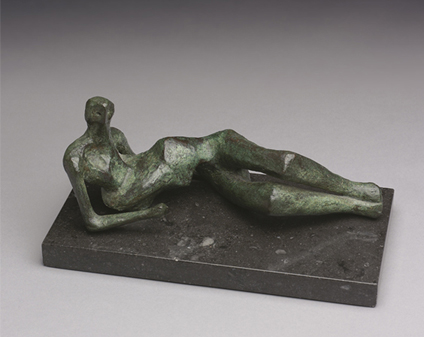AT WHICH London art gallery could you have seen, during the last five years, the following twentieth-century works of art? Picasso's Buste de Femme sur Fond Gris, 1943, Le Hibou, 1952, Femme de Profil dans un Fauteuil, 1956, Les Pigeons Perches, 1960, Nu Couche et Homme a la Guitare; Braque's Le Store, 1954-61; Gris's La Grappe de Raisins; Giacometti's Nature Morte dans l'Atelier 1950; Leger's Composition au Couteau, 1947; Magritte's L'Explication, 1952; Willem de Kooning's Untitled (Woman), 1966-7; Gabo's Linear Construction in Space No 2, 1957-8; Ernst's Enfant, Cheval, Fleur et Serpent, 1927; De Chirico's Evangelical Still Life, 1917.
The Tate might be a reasonable guess but the right answer is Waddington Galleries, where the con-tinuous, rolling display of gallery stock at 11 Cork Street has, for many years, offered an arguably better and certainly more varied education in the major modern art of this century than any of the country's public galleries. If you knew the answer, it is odds-on that you are either an artist, an art student, an art collector, a critic or a curator. Most other people, even those with an interest in art who will make a point of seeing Mantegna at the Royal Academy, Rembrandt at the National Gallery and Otto Dix at the Tate, are simply unaware of the great paintings and sculpture usually on display behind the plate-glass of this particular commercial art gallery. I should add at this point that it is my fault.
Well, not entirely my fault - but it is the fault of critics in general that so little attention has been called to the great works of art that are regularly shown at Waddington Galleries on their way from one (usually private, usually foreign) collection to another. Arts journalists have a fondness for ''events'' that can cloud...


